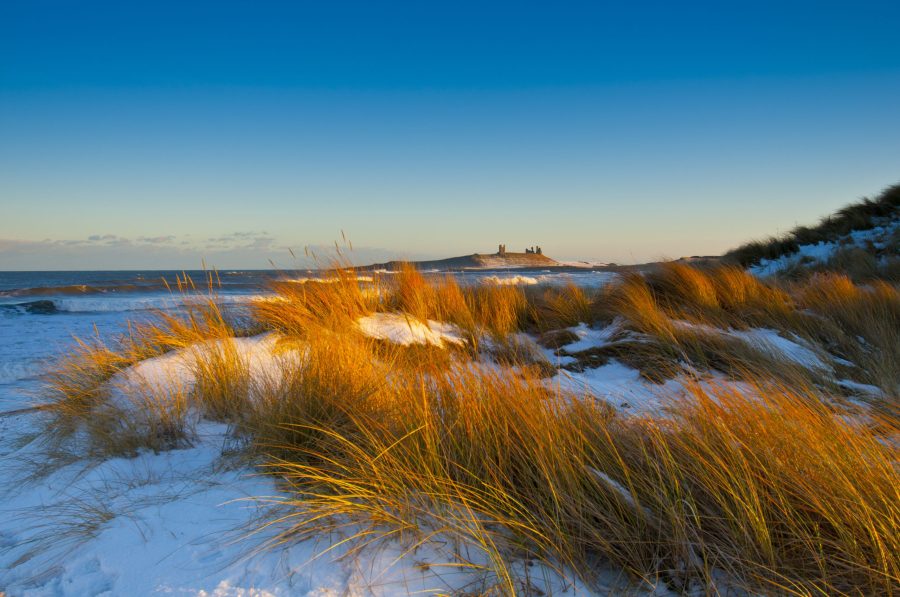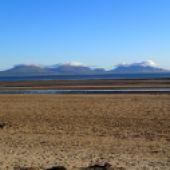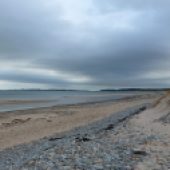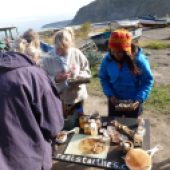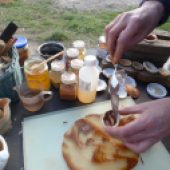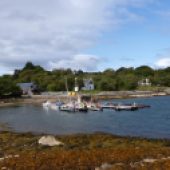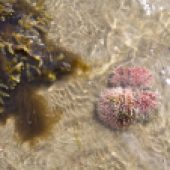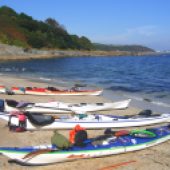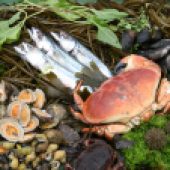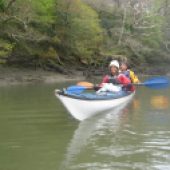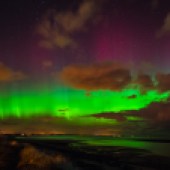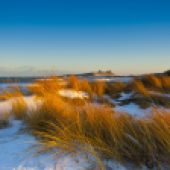Jini Reddy, author of Wild Times: Extraordinary Experiences Connecting With Nature in Britain, shares five fabulous ways to get back to nature by the sea. Which one will you add to your bucket list?
THE MINDFUL BEACH WALK
ISLE OF ANGLESEY
‘I’m walking through grassy dunes towards the glorious stretch of sand that is Newborough Beach. Ordinarily, such an outing would take place in summer and I might be with a friend, chatting, a towel tucked under my arm, a bottle of lemonade in the bottom of my rucksack. But it’s October and I’m lightfooted and as silent as a ghost.
It’s not that there is no noise in nature. Plainly there is. A howling gale, the buzz of an insect, birdsong, the crunch of leaves underfoot, the crash of waves, the almost imperceptible twitch, scratch and burrowing of creatures unseen: all provide a potent soundtrack. Even a profound silence in nature can feel like the echo of the land.
To one side are the snowy peaks of Snowdonia and to the other is a lighthouse on a tidal island. The collision of coast and mountains makes for a dramatic vista. There’s a stiff breeze, the waves are thunderous and the long, low clouds pierced by shafts of sunlight. The pebbles in the sand sparkle, jewel-like. If the aim of mindfulness is to heighten awareness, it’s working. ‘
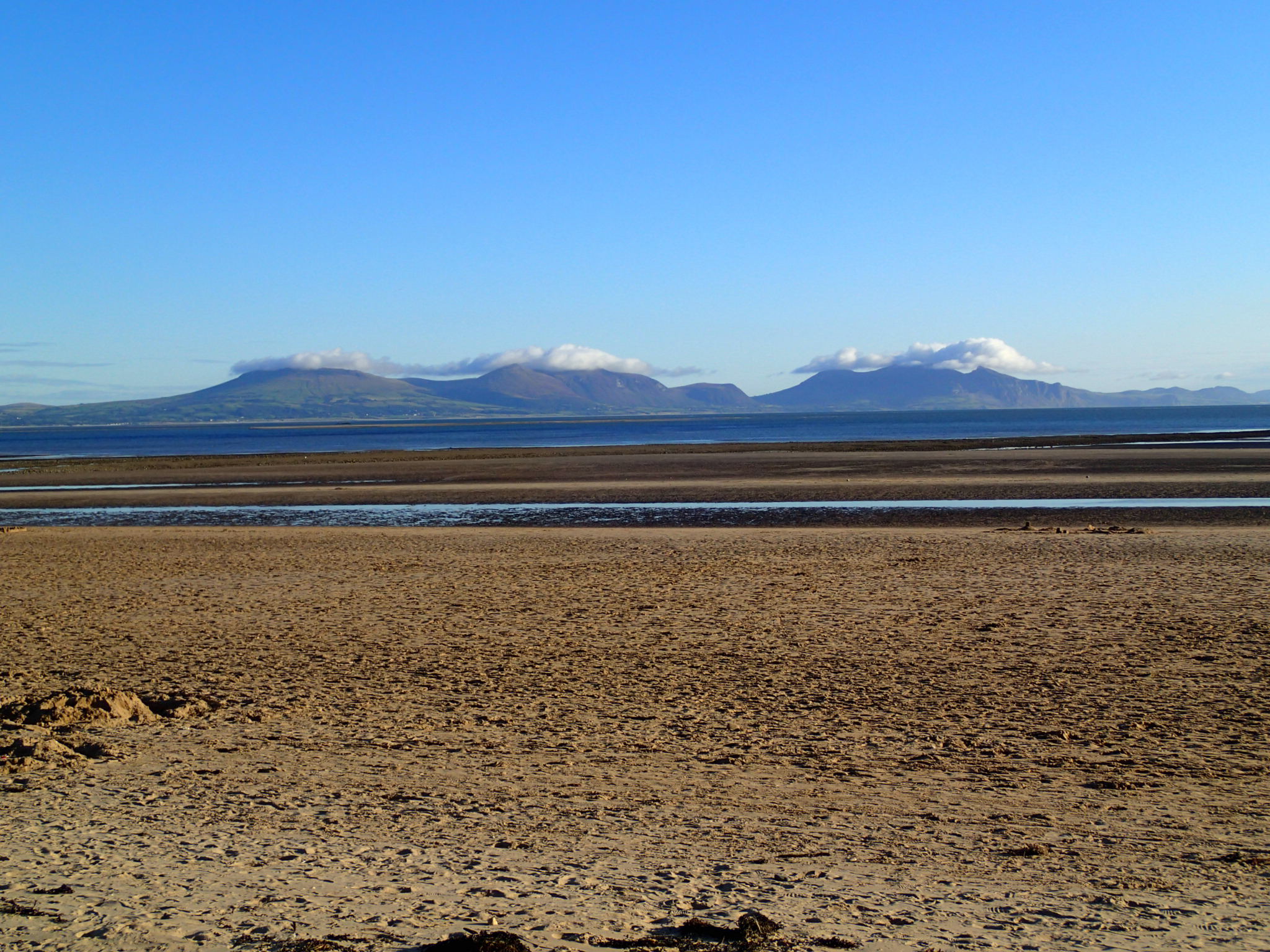
Photo: Sholto Radford
TAKEAWAY TIPS
1. When hiking with friends, agree beforehand to walk silently for part of your walk. Then come together later and share your impressions.
2. When you’re hiking, pause to savour your surroundings with all of your senses.
3. Choose an object, such as a fir cone or a leaf, and explore it in real detail. Notice how this amplifies your awareness of the present – and how much more interesting the object becomes.
————————————————————————————————————————————————
THE ANCIENT COASTAL PAINT PALETTE
STAITHES
‘The ochre pigments which have been slowly drying out over the fire are ready to be ground into a powder. We use a mortar and pestle, smooth out the grit and mix the pigment with various binders: egg white, egg yolk, linseed oil, honey, resin and water. When it reaches a glossy, silky consistency, we deposit it into upturned limpet shells. Dark vermillion, burnt umber, sienna, saffron yellow: we’d be the envy of many a cave artist with this earthy palette.
Now we’re ready to experiment with our paints, on paper. There’s ample inspiration: the fossils, the hazy skies, the wild sea, the fronds of beach grass, a snake-headed cormorant on the rocks. A swirl here and a dab there, it’s all absorbing and fun. Our creations are wildly abstract and (in my case) clunkily amateur.’
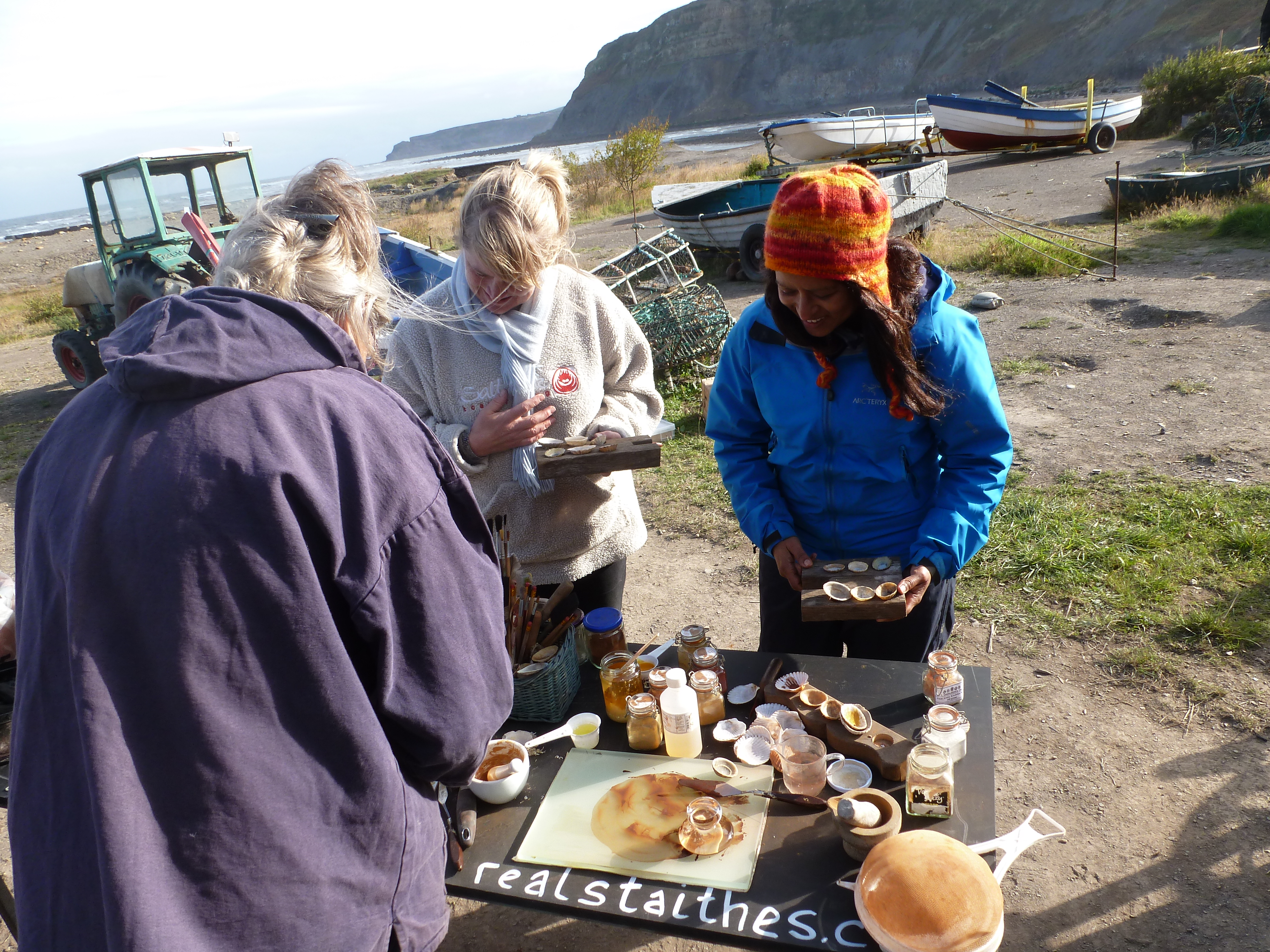
Photo: Jini Reddy
Real Staithes (01947 840278, realstaithes.com) offer the one-day Ancient Paint Palette Day, including lunch, throughout the year. They also offer coastal crafts and foraging days as well as ‘Mackerel-catch-cook-consume’ fishing trips, all starting on the Staithes seafront.
Looking for the perfect holiday right at the water’s edge? Discover our collection of exclusive cruise trips around the British Isles here.
TAKEAWAY TIPS
1. To make your own natural paint, experiment with earth or mud. You can dry it out, grind it to powder and mix with a binder of egg yolk, water or linseed oil. Or try smashing broken terracotta pots, then grinding and mixing in the same way.
2. Streams are a good place to hunt for crumbly rocks that can be turned into paint.
3. The seashore is a great source of art materials: shells, seaweed, driftwood, pebbles and sand can all be used creatively, for sculptures and mobiles, if not for painting.
4. If you’re on a beach, be aware of when the tide starts to come in and take care when clambering over rocks.
————————————————————————————————————————————————
AN ISLAND ESCAPE
SHUNA
‘The promise of an island eyrie; the chance to wander, to follow your whims and immerse yourself in nature with no aim, no design and no-one to answer to: such is the stuff of lush, wild dreams.
This particular dream leads me to the island of Shuna, a tiny, secluded dot in Scotland’s Inner Hebrides. It’s part of the Slate Islands, about 30km south of Oban and more or less invisible on most maps. This cloak of invisibility lends the island an air of mystery – one that is even more pronounced when you set foot on it.
Billed as an eco-island, Shuna relies on solar panels and a small wind turbine to power all but one of its six holiday cottages (though there is a back-up generator). LED lighting is used, water comes through the taps via natural springs, drinking water is filtered and recycling encouraged. There are no roads and – hallelujah! – no cars.’
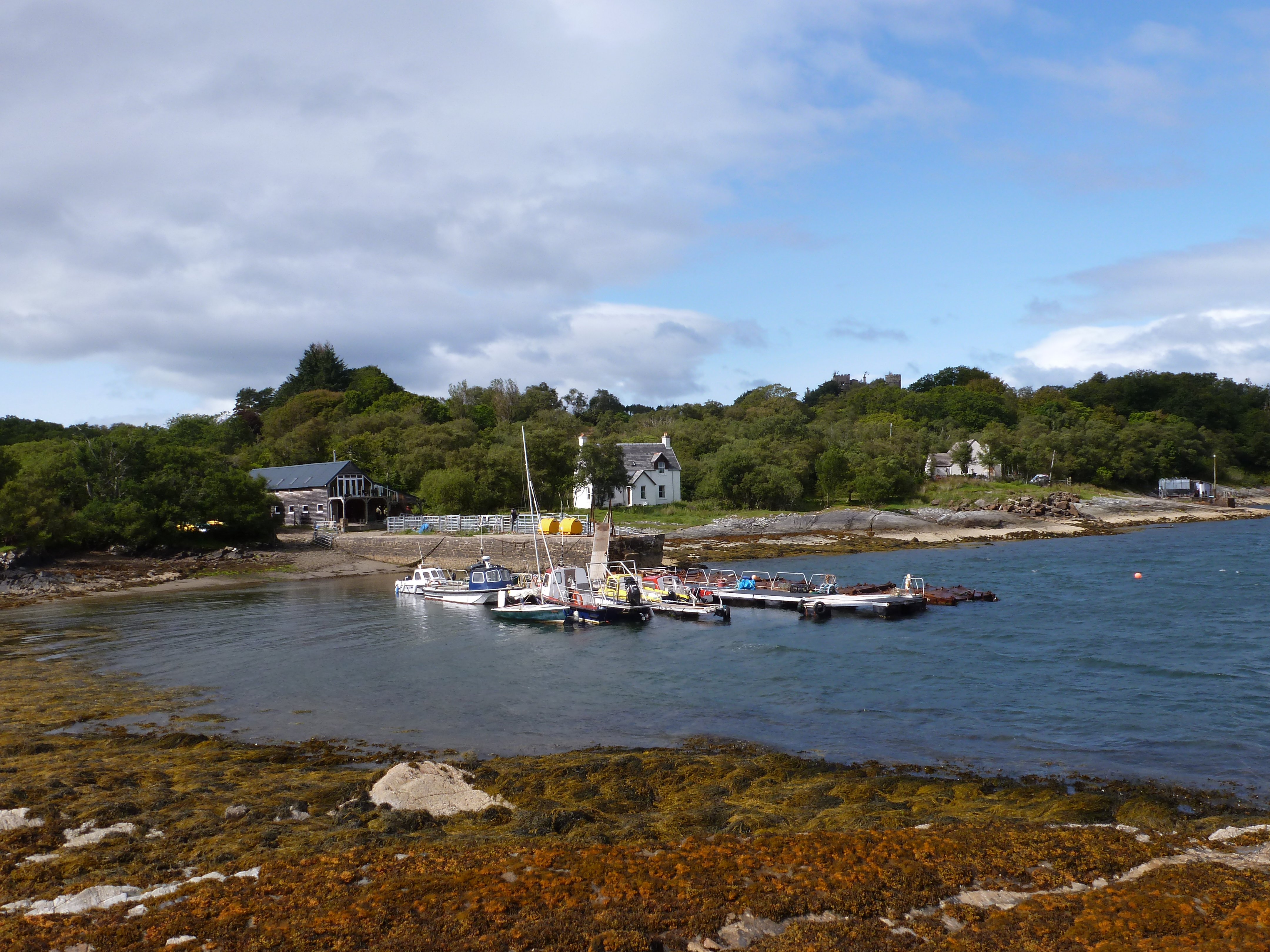
Photo: Jini Reddy
You can rent out one of six cottages from spring to autumn on the island of Shuna (01852 314244, islandofshuna.co.uk). On booking, you’ll receive a full information sheet. Oakwood cottage has two doubles, one twin, and one twin bunkroom. It’s a good idea to bring all the supplies you need with you, so that you’re not reliant on your boating skills!
TAKEAWAY TIPS
1. You don’t have to travel far to find an island. Around London, you can enjoy a day-long island escape on crane park island, wilderness island and the islands of the walthamstow wetlands. (See wildlondon.org.uk for more information.)
2. There are plenty of ways to recreate the joys of island life, even if you can’t get to an island. Try beachcombing or stringing up a hammock in your garden or local park (discreetly). Switch off your phone and remove your watch.
3. If alone on an island, especially somewhere remote, carry a whistle, a phone, food, torch and a survival sheet. Help, should you need it, can take time to organise.
———————————————————————————————————————————————–
WILD FOODS BY SEA KAYAK
CORNWALL
‘The sun is beating down and I’m bobbing in a cove not far from Falmouth’s Swanpool Beach. One of my guides, Chris Salisbury, lays down his paddle, dips his hand into the water and gently pulls out some thick ribbons of brown kelp, a head of sea lettuce and a few spaghetti-like strands of thongweed.
‘Our shoreline has loads of nourishing seaweeds, and they’re full of vitamins and minerals,’ he says. ‘You can steam them, or stir-fry them or eat them raw, as a salad,’ he adds. ‘They may not all taste good, but all those close to the shore are non-toxic. Of course, it’s important to know the water quality of the beach or bay you want to forage in.’
This is music to my ears. Foraging on land among our abundant hedgerows is a fantastic experience, as enlivening for the senses as it is to the palate. But using a sea kayak to discover the rich harvest of edible seaweeds, molluscs, fish and coastal plants in and around the clean waters of southern Cornwall adds a rich new dimension to the experience.’

Photo: Wild Wise
Sea Kayaking Cornwall (01326 378826, seakayakingcornwall.com) organise the two-day wild Food adventure (previously co-run with Devon’s wildwise). The kayak and all the equipment needed, including wetsuits, waterproof kayaking jackets, buoyancy aids, helmets, paddles and spray decks are included, though you’ll receive an info sheet and a full list of what to bring when you book. (see under ‘expeditions’ on their website.)
TAKEAWAY TIPS
1. Find out about the water quality of the beach or bay you want to forage in from the marine conservation society website: mcsuk.org.
2. All British seaweeds are edible except Desmarestia, a deep-water species. Never harvest any seaweeds that have become detached: anything floating free may have drifted in from more polluted waters.
3. For a milder introduction, try sea lettuce (Ulva lactuca). Growing everywhere and easily identified, it can be eaten straight from the sea. You can add it to salads or use the sheets to parcel up other foods, sushi-style.
———————————————————————————————————————————————–
DARK SKY GAZING
NORTHUMBERLAND
‘My mission? To ‘tour’ the dark skies on Lindisfarne, otherwise known as Holy Island, the pilgrimage site and wildlife haven, a mile off the coast. My guide is Martin Kitching, a wildlife expert, birdwatcher, scientist, photographer and astronomy guide who runs Northern Experience. Along with wildlife expeditions, he offers stargazing trips. One wintry, sunny December afternoon he meets me at the train station in the town of Morpeth. The plan is to drive up the coast before crossing the causeway to the island as dusk falls. ‘The tide will be out, and you’ll still get to see the island in daylight,’ he says.
The Northumberland coast is special: wild, unspoilt and beautiful, its tranquillity is a force field to which you willingly succumb. Dolphins, seals and even whales have been spotted in the waters and the shoreline is rich in birdlife. Today the skies are blue and clear, flecked with seabirds and the promise of a show-stopping twilight. Breakers crash on the shoreline of an Area of Outstanding Natural Beauty that extends for miles from the Coquet Estuary north to Berwick-upon-Tweed, on the Scottish border.’
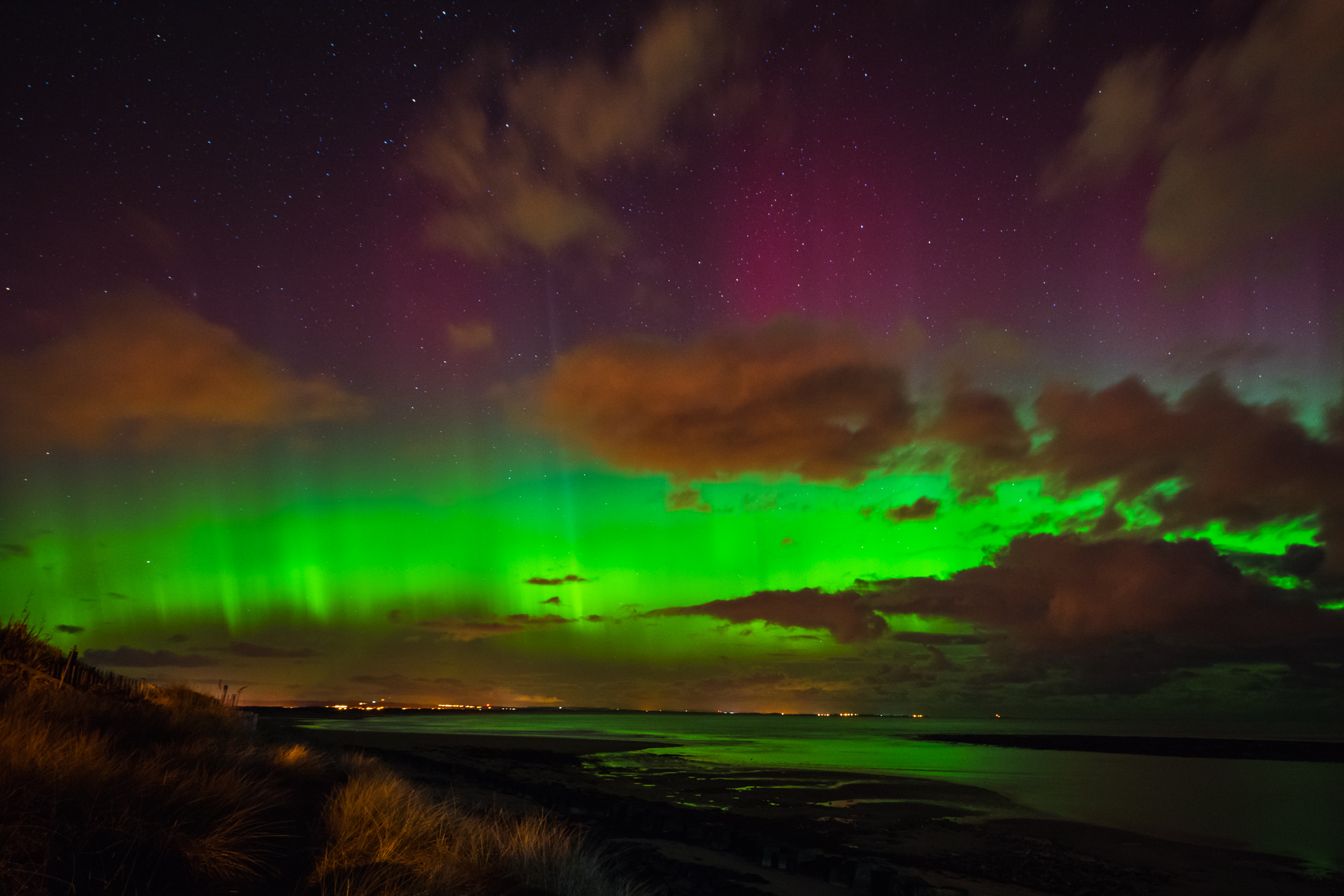
Photo: Martin Kitchling/northernexperienceimages.co.uk
Discover Stargazing group sessions and the six-hour Dark Sky Safari are offered by Northern Experience Wildlife Tours (01670 827465, northernexperiencewildlifetours.co.uk). Packages include three to four hours wildlife watching leading up to darkness, then two hours of stargazing. These take place in locations around Northumberland, including on Holy Island, and run on set dates.
TAKEAWAY TIPS
1. You don’t need a telescope to go star gazing: you can see plenty through your binoculars or with the naked eye. And you can still enjoy the view without knowing what you’re seeing.
2. Join a local astronomy club. They will know the best sites for night skies.
3. Come prepared: bring warm clothing, a hat, a blanket, a flask and a mat or chair to sit on.
4. Check the moon phases: stars are more visible with a new moon. Cold, clear winter nights are best. You can also install Google Skymap on your smartphone or Stellarium on your laptop or PC.
———————————————————————————————————————————————–
Please check government guidelines and company websites before planning your trip to the coast. For more stories about coastal nature, click here or pick up a copy of the magazine.

